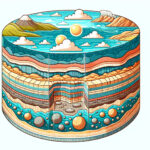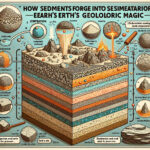Introduction
An overview of the two primary rock types: sedimentary and igneous. Briefly mention their significance in Earth’s crust and their role in the rock cycle.
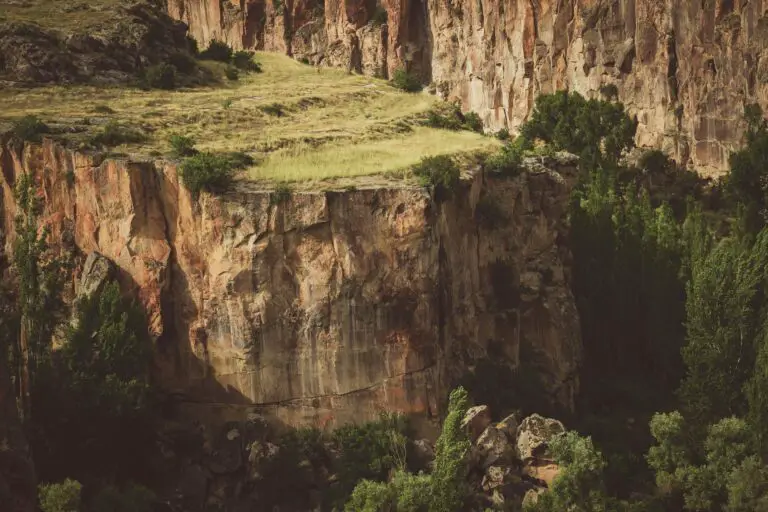
Embark on a journey where the cool, structured world of igneous rocks contrasts with the layered history embedded in sedimentary stones. What’s the buzz about these rock stars anyway? Well, imagine the Earth without its solid foundation – a spinning ball of chaos! Igneous rocks, the cool kids of geology, form from the fiery depths of the Earth’s mantle, solidifying from molten magma. Our planet’s architectural backbone, these rocks set the base for continents and ocean floors, towering their strength under our feet.
On the flip side, let’s dive into sedimentary rocks, the episodic storytellers among stones. Picture the Grand Canyon; it’s like nature’s library, each stratum a page in Earth’s memoir. These rocks, born from the remnants of older rocks, organic matter, or crystal precipitates, showcase history itself. They’re packed with fossils that time-capsule ancient life; without them, we’d be clueless about prehistoric bustling biodomes. Ever held a piece of sandstone? You’ve grasped a sandy novel of time!
So next time you skip a pebble across a pond or marvel at a marble statue, ponder a moment on the tales of transformation these rocks reveal. From the fiery birth of igneous rocks to the sedimentary layers that archive eons – they’re both chapters of the same grand story intertwining in Earth’s dynamic rock cycle.
Defining Sedimentary and Igneous Rocks
Let’s picture a world where every rock tells a tale – a geological saga that spans eons. We’re not merely talking about bland, lifeless stone; we’re diving into nature’s library, filled with the chronicles of our planet. Now, sedimentary and igneous rocks, they’re like the contrasting genres of this vast rock anthology.
Imagine yourself by a serene lake or a bustling riverbank. You’ll find sedimentary rocks there, those laid-back types that form in leisure over thousands or millions of years from the build-up of sediment—think pages of a novel accumulating to form the complete story. Sand, clay, bits of biological leftovers, and minerals settle into layers and compaction, and cementation transform this compilation into a solid mass. These rocks are akin to a history book; they preserve fossils, tell of ancient environments, and even hold clues to Earth’s far-gone climate. Interested in knowing more about these storytellers? Get a glimpse into their world through this resource on sedimentary rocks.
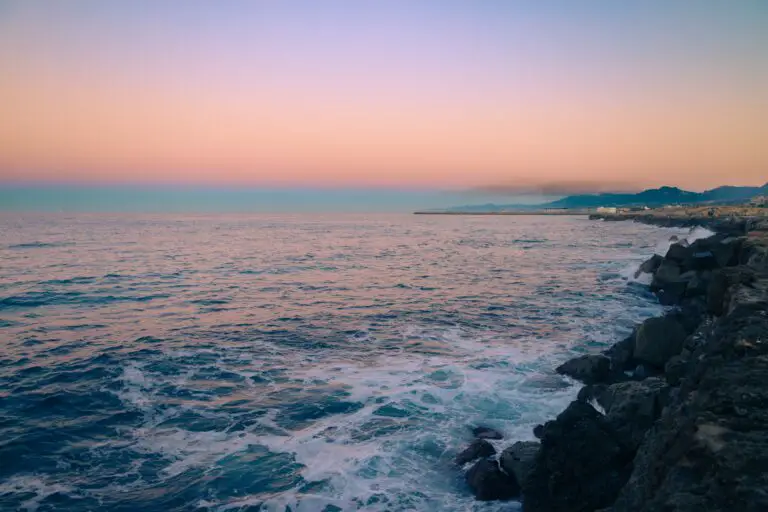
In contrast, let’s turn our gaze upon a volcano’s awe-inspiring might. Herein lies the birthplace of igneous rocks. They’re the hardened heroes born from fiery molten magma that cools and solidifies—either below Earth’s surface, as intrusive (or plutonic) rocks, or after it erupts as lava and cools rapidly to become extrusive (or volcanic) rocks. Granite and basalt are classic examples. These rocks are storytellers of Earth’s fiery temper, narrating a tale of high temperatures and pressures that boil beneath our feet.
While sedimentary rocks like to layer up and sometimes play hide-and-seek with fossils, igneous rocks are all about making a grand, crystalline entrance. Still, the stage is set for these protagonists to transform. With the right push and shove from Earth’s dynamic processes, they might just make their mark in another chapter under the guise of metamorphic rocks. But until then, remember: whether pebbly or glossy, each rock in hand is a page from Earth’s grand archive, a window through which we glimpse our planet’s spirited past.
Origin and Formation
Allow me to take you on a rock-solid journey where we delve into the spectacular origins of sedimentary rocks and contrast them with their fiery siblings, igneous rocks. Picture the Earth’s grand landscape—waterways brimming with sand, mud, and pebbles, all journeying towards their eventual fate, set on becoming part of the planet’s historical archive in the form of sedimentary rock.
Sedimentary rocks come to life through a process of sediment compaction and cementation. Imagine mountain-sized heaps of sand collected at the bottom of a lake. Over time, layer upon layer piles up, each whispering an ancient story. With the weight of the world above them, these sediments cozy up, compress, and solidify into a unified collective that we call sedimentary rock. It’s truly a testament to nature’s knack for turning the mundane into the magnificent.
In stark contrast, igneous rocks are the rock stars of geology, born from the fiery depths of the Earth’s mantle. When magma or lava erupts like nature’s fiery liquid and cools, it doesn’t just turn to stone—it converts into a mosaic of mineral crystals, each one a pixel in the grandeur of an igneous rock.
Exploring further, let’s consider the divergent tales of these rock types. Igneous rocks form a kind of geological selfie snapped during volcanic episodes, catching the Earth in its most tempestuous moods. On the flip side, sedimentary rocks narrate a collective journey—a saga of fragments from various origins, united by the forces of water and wind.
To get a grasp of the entire rock formation process, imagine a grand symphony with each rock type playing its unique instrument, contributing to the geologic orchestra that sculpts our stunning planet. So the next time you hold a stone, remember it may just be a snippet from Earth’s captivating autobiography!
Type Classification
If we were to attend Earth’s grand geological ball, sedimentary and igneous rocks would be two guests with remarkably different tales to tell. Picture sedimentary rocks as the historians of our planet; they’re formed from the accumulation of particles over time—much like stories compiled in a history book. These particles can come from disintegrated older rocks, organic materials, or even minerals precipitated from water. Consequently, we categorize them into three main types: clastic, chemical, and organic.
Clastic sedimentary rocks, like the well-known sandstone, are akin to a jigsaw puzzle made from older rocks. These are the remnants of other rocks that weathered away, were transported by elements such as water or wind, and then gracefully came to rest, layer upon layer, telling the ancient history of their origin.
Chemical sedimentary rocks, on the other hand, are like crystal-filled snowflakes that formed from evaporating mineral-rich liquids—limestone being a prime example. As seas or lakes evaporate, dissolved minerals crystallize and blanket the floor, leading to a rock that’s a snapshot of the water’s mineral composition.
And then we have organic sedimentary rocks, such as coal. Picture ancient, lush forests compressed over eons, with their biological material transformed into substantial energy-packed deposits that now power our world.
Moving from the sedimentary diary to igneous rock’s birth story, we find two impressive families: intrusive and extrusive. Intrusive rocks, like granite, crystallized slowly in the Earth’s crust, giving birth to coarse-grained textures that literally provide a foundation for continents! Extrusive rocks, including basalt, made a dramatic entrance through volcanic eruptions, cooling swiftly on the surface and often capturing the imagination with their fine-grained textures and air-pocketed surfaces akin to a loaf of bread fresh from the oven.
So, when comparing sedimentary rocks to their igneous relatives, the formation process and texture are as distinct as a novel is to poetry. Sedimentary rocks are the layered anthologies of the Earth’s past, whereas igneous rocks forge their legacy from the fiery depths of the Earth’s mantle—exhibiting a spectrum from glassy obsidian to majestic mountain ranges built of hardened lava flows.
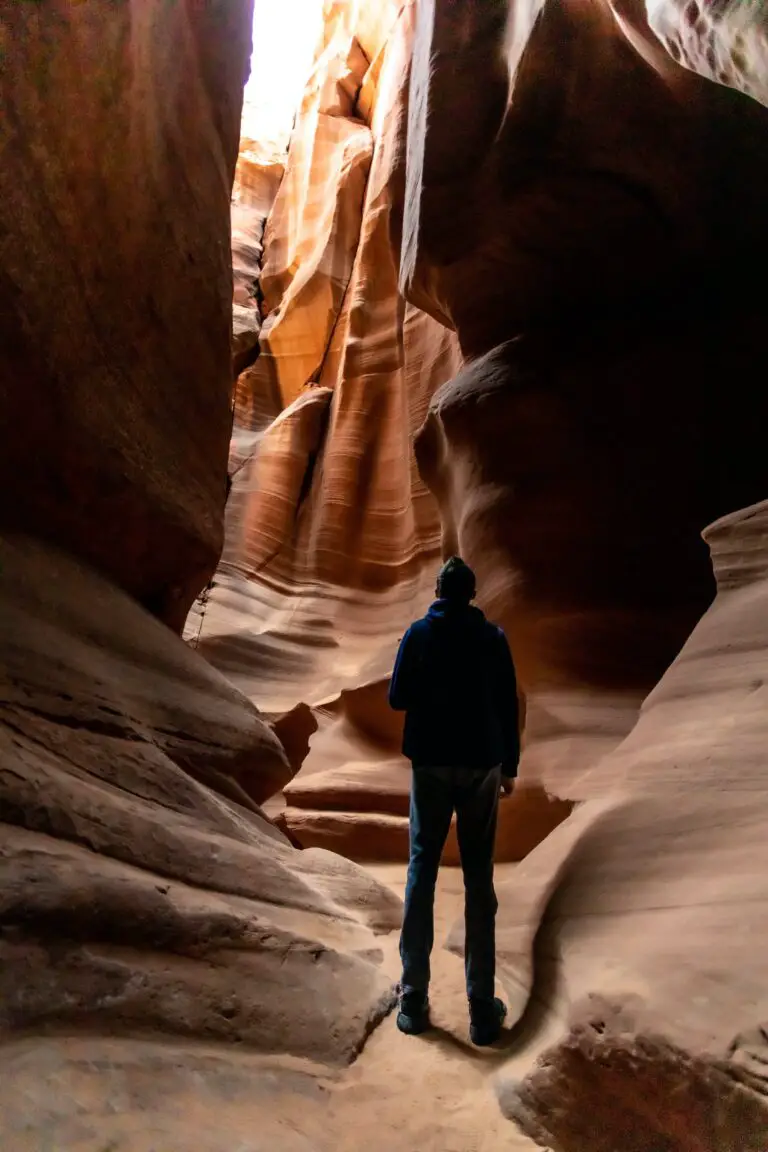
Texture and Composition: A Tale of Rocks
Imagine you’re walking along a serene beach, soft sand underfoot and you stumble upon a curious stone, smoothed over time by the gentle caress of the ocean waves. That’s sedimentary rock for you – storytellers of Earth’s history, layer by layer. Now picture yourself on a majestic volcanic mountain, observing the crystalline roughness of the cooled lava. These are the robust igneous rocks, direct descendants of Earth’s fiery interior. Both types of rocks are fundamental to our planet, yet they couldn’t be more different in their textures and compositions.
The texture of sedimentary rocks such as sandstone or shale is like the pages of an old book – fine-grained and layered, each layer whispering tales of years gone by. In contrast, igneous rocks, like granite or basalt, are born from molten magma and showcase a more chaotic, often coarser texture due to rapid cooling, causing minerals to interlock like pieces of a jigsaw puzzle.

When it comes to composition, sedimentary rocks often boast a mixed bag of minerals and organic matter – a mosaic crafted by sediment deposition in water. These rocks might contain fossils, providing a lens into past life forms. Igneous rocks, on the other hand, primarily consist of silicate minerals and offer a snapshot of the intense conditions from deep within the Earth’s molten core.
Think of it this way: if sedimentary rocks are a rich historical novel, igneous rocks are the raw epic poem of our planet. The former is shaped by slow accumulation and patient crafting, while the latter is forged in the depths of Earth’s fiery heart, rushing to crystallize into solid form. So the next time you hold a pebble in your hand, remember – it’s more than just a stone; it’s a piece of Earth’s endless story.
Appearance and Structures
Imagine you’re time-traveling through the ages, witnessing the earth’s grand theater of rock formation. Your eyes would first catch the dramatic spectacle of molten magma cooling into solid igneous rocks, sleek and often homogeneous like a perfectly baked lava cake. Then, you’d fast forward to a more serene setting, where sediments calmly settle layer by tranquil layer, silently scripting the story of sedimentary rocks.
What’s striking in this visual narrative is the distinct difference between these two foundational members of the rock family. Sedimentary rocks often boast a layered wardrobe, each stratum a testament to different episodes of deposition. Picture the Grand Canyon’s layered tapestry, a geologic library with the pages openly displayed. In contrast, igneous rocks possess a more uniform and often denser disposition, their appearance more akin to the unbroken vastness of a night sky, just before the dawn of stars.
These visual clues reveal tales of origin. While igneous rocks crystallize from the inferno of Earth’s inner depths, sedimentary rocks are born from the gentle accumulation of particles at the Earth’s surface. Imagine running your hands over a piece of sandstone, feeling the gritty texture of ancient beaches, versus the glassy smoothness of an obsidian shard, whispering secrets of its fiery birth.
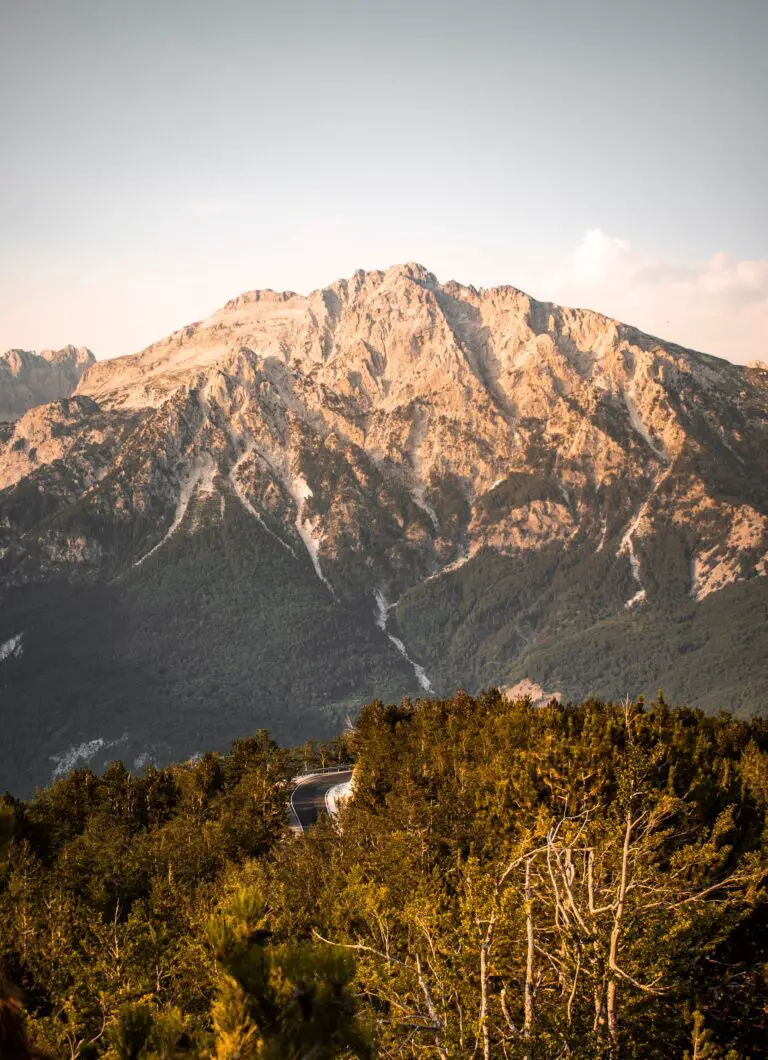
So next time you find yourself in the presence of these natural marvels, take a moment to appreciate the silent stories they tell. With just a cursory glance at an outcrop, you can trace the lineage of rocks back to the very processes that formed our diverse geological landscape.
Fossils and the Past
Imagine you’re walking along a dusty trail, the remnants of an ancient sea from millions of years ago. What if I told you that the ground beneath your feet held the secrets of creatures that once roamed this oceanic expanse? Sedimentary rocks, unlike their igneous cousins, are like time capsules; they often house fossils that serve as a window into Earth’s past. These stories of life, imprinted on stone, are a chronicle of evolution and change that igneous rocks simply cannot tell.
Sedimentary rocks form like pages in a book, layer upon layer, each capturing a slice of history. This layering process ensnares bits of plants and animals, preserving them as the sediment turns to rock. Fast forward to a sunny Saturday, a lucky hiker might stumble upon the imprint of a leaf or the bones of a creature that lived before dinosaurs ruled the land. These fossils are the signatures that life once thrived there, offering insight into ancient climates and ecosystems.
In contrast, igneous rocks are born of fire, forged in the depths of the Earth or during volcanic eruptions. Their origins in molten magma allow little opportunity to capture the delicate remains of living organisms. As a result, they lack the biological time stamps found in their sedimentary counterparts.
If the Earth were a vast library, sedimentary rocks would be the biography section. They have the power to narrate the Earth’s past, recounting tales of shifting continents, rising mountains, and creatures long extinct. Meanwhile, igneous rocks would fill the shelves of mystery and adventure, with their volatile births and crystalline mysteries offering a different kind of intrigue.
Consider the Grand Canyon, a marvel not only for its sheer size but for the stories etched into its layers. Or picture the dramatic cliffs of Dorset, England, where one can decipher life’s legacy preserved in stone. These natural wonders provide a unique testimony to life’s resilience and are constant reminders that our planet is ever-changing.
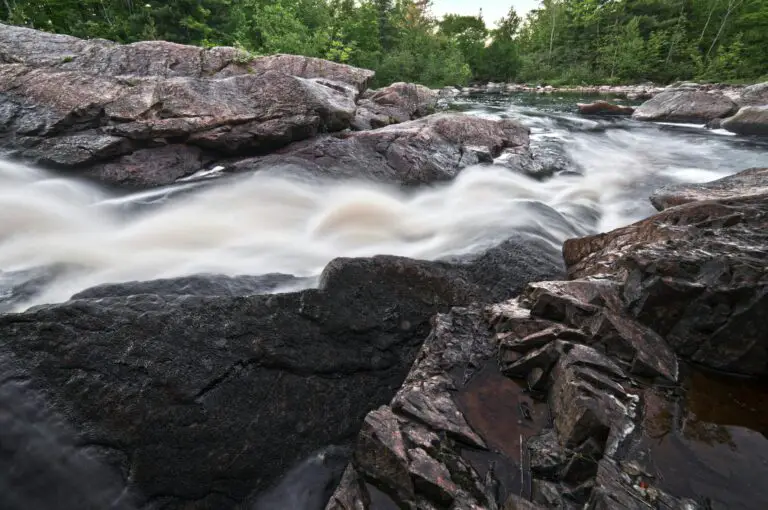
As you explore the world’s natural landscapes, seeing them through this lens can turn every adventure into a treasure hunt for history’s hidden gems. And knowing how sedimentary rocks differ from igneous rocks – with fossils as their secret – adds an extra layer of excitement to your explorations.
Economic Importance
Have you ever wondered how the ground beneath our feet contributes to the economy? Sedimentary and igneous rocks, while both pivotal to earth sciences, play distinctly different roles in our economic sphere. Let’s drill down and unearth the value locked within these rocks.
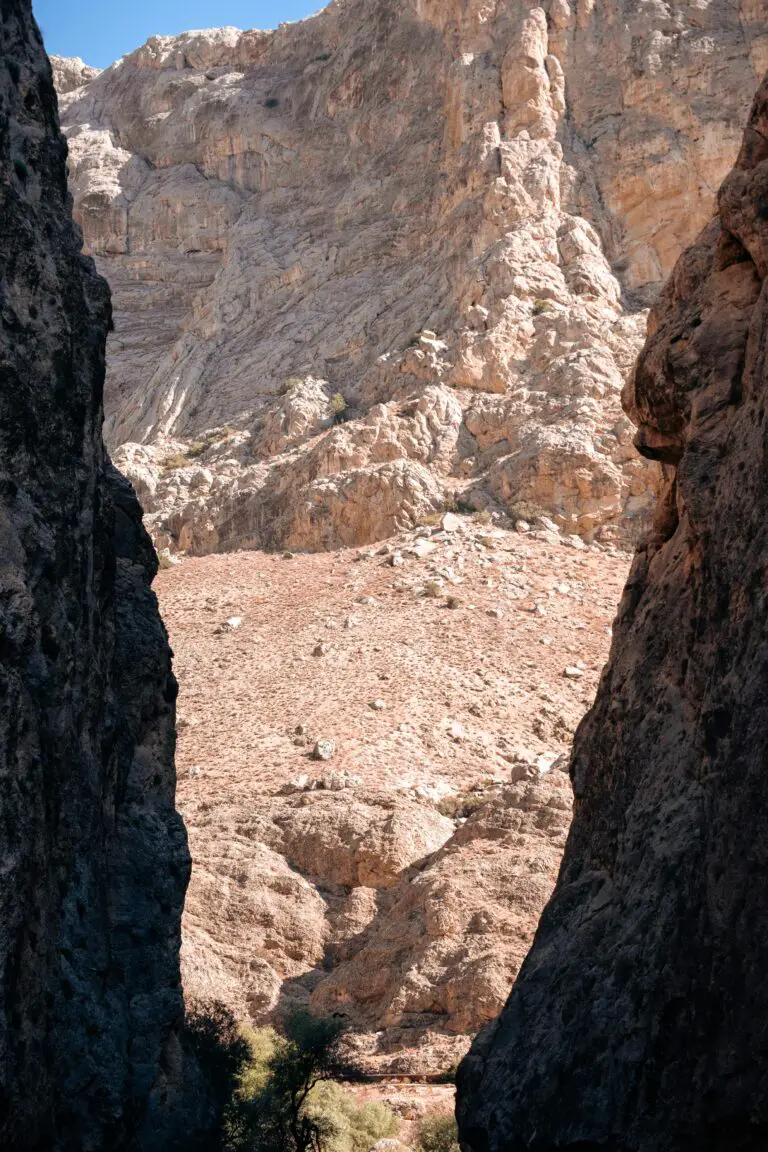
Sedimentary rocks, with their layered compendium of historical data, are not just time capsules for geologists. They are the bedrock of the construction industry. Limestone, a type of sedimentary rock, is a primary ingredient in cement and is thus foundational in building homes, bridges, and skyscrapers. Imagine the skyline of any major city without the touch of sedimentary rocks — unthinkable, right?
But that’s not all. Beyond construction, sedimentary rocks are essentially the cornerstones of the energy sector. These rocks are natural reservoirs of fossil fuels, such as coal, oil, and natural gas. When you fill up your car with gasoline or heat your home in the winter, you’re tapping into the ancient energy stored within these rocks.
On the flip side, igneous rocks might not make the same splash in construction or energy, but they have their unique niches. Take granite, for instance — it’s the king of countertops! Durable, heat-resistant, and aesthetically pleasing, this igneous rock has carved out an irreplaceable position in home design. Additionally, certain igneous rocks are mined for their precious metals like gold, silver, and copper, proving that they’re not just another stone on the block.
Both sedimentary and igneous rocks have shaped human civilization in profound ways, and they continue to do so. From the rock-solid foundation of your office tower to the sparkle of your favorite jewelry, these natural resources provide an incredible array of applications that bolster various sectors of the economy. So, the next time you admire a beautiful building or fill up your car, remember the enduring legacy of these rocks – and the remarkable ways in which they differ.
Role in the Rock Cycle
Imagine the rock cycle as nature’s grand recycling process, where sedimentary and igneous rocks are star players, each with their unique journeys and transformations. Sedimentary rocks, those layered storytellers, begin their tale at the Earth’s surface. Tiny fragments of life’s history, carried by rivers, wind, and glaciers, settle and compact over time into sedimentary archives like sandstone and shale. They’re the biographers of Earth’s surface processes, each layer a chapter chronicling time.
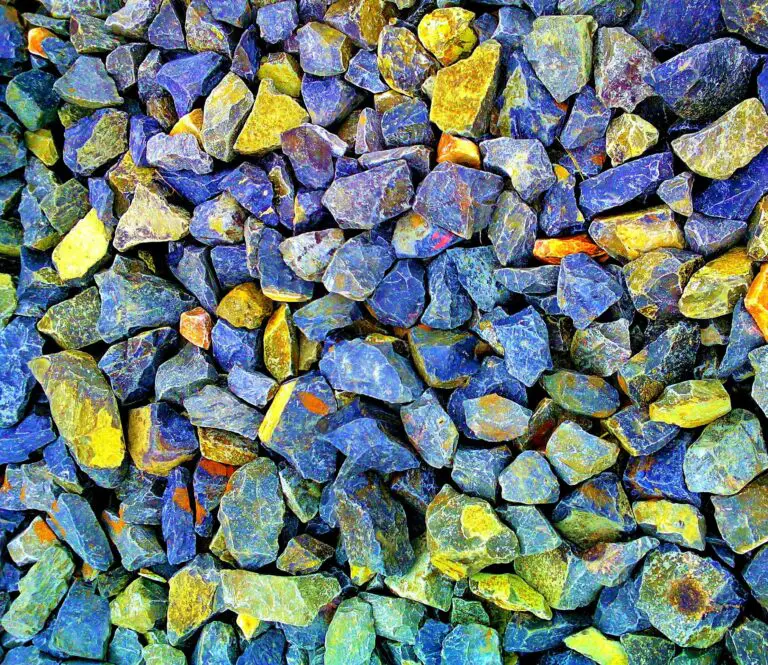
Igneous rocks, on the other hand, rise from the fiery depths. Born from molten magma, they cool and crystallize either deep beneath the surface, forming coarse-grained granite, or after a volcanic eruption, resulting in the fine-grained basalt that coats ocean floors and island archipelagos. They encapsulate the tales of Earth’s fiery interior, each speckled mineral a witness to the inferno of its birth.
Our sedimentary friend might find an eventual path to metamorphism, pressure-cooked into a denser, tougher version of itself as slate or schist. And if the heat rises enough, it could even melt back into the molten mix, ready to reemerge as a reincarnated igneous rock. In contrast, those born of magma could end up shattered, weathered, and reincarnated into the next sedimentary rock. Each rock type can morph into the other, given the right conditions on this epic geological conveyor belt.
Every boulder you see perched on a hill, every stone under your feet on a pebbly beach, was part of this cycle at some point. Picking up a piece of slate, you might be holding hundreds of ancient rivers in your hand; reaching for a chunk of granite, you’re gripping a snapshot of Earth’s molten heart. By understanding their transformative voyages in the rock cycle, we see that sedimentary and igneous aren’t just different types of rocks—they’re different chapters of Earth’s remarkable geological autobiography.
Frequently Asked Questions
What are the key differences between sedimentary rocks and igneous rocks?
Imagine you’re baking a cake (igneous rocks) versus creating a layered salad (sedimentary rocks). Igneous rocks form from cooled molten lava, like a cake solidifying in an oven. Sedimentary rocks, on the other hand, are akin to a salad, made of layers of sediment compressed over time – ingredients like sand, minerals, and bits of other rocks piled up in delightful strata!
Can you see sedimentary rocks in everyday life?
Next time you’re at the beach looking at the cliffs or even in the city admiring a sandstone building, you’re basically checking out Earth’s history books. These sedimentary rocks are pages filled with tales of ancient environments, compressed into stone over millions of years.
How do the formations of these rock types affect their characteristics?
Igneous rocks often have a tough and crystalline structure due to their fiery birth. These natural fortresses are rugged and durable. Compare that to the sedimentary rocks, which are like history’s binders — softer, often layered, and full of information like fossils that tell us about life long gone.
Do these rocks have different uses based on their properties?
Sedimentary rocks can be quite the star in the landscaping world, perfect for that elegant garden path. In contrast, the strength of igneous rocks makes them a builder’s dream for structures demanding durability, such as cobblestone streets or grand monuments.
Are there any famous landmarks made of these rock types?
Absolutely! The glorious sedimentary rock layers of the Grand Canyon are like Earth’s own history book on display. Meanwhile, the formidable Mount Rushmore was sculpted from granite, a proud example of igneous rock’s robustness and ability to withstand the test of time.
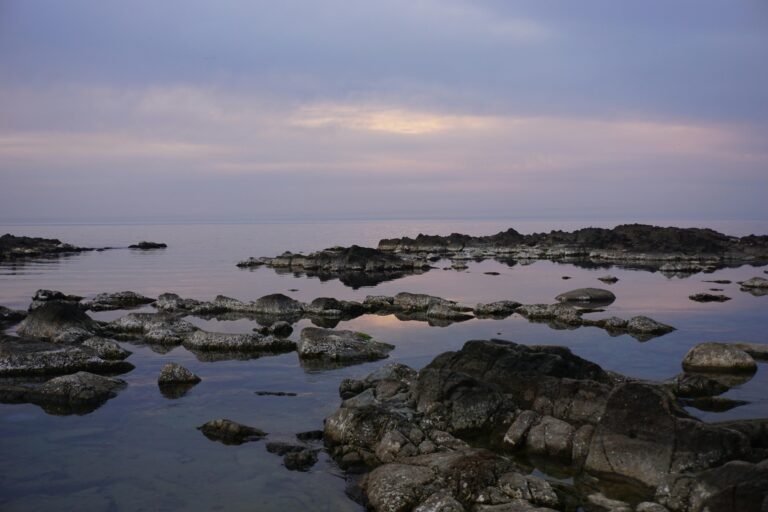
Is it true that sedimentary rocks are only found on Earth’s surface?
Mostly, yes. Sedimentary rocks love the spotlight, often found lounging on Earth’s surface where they can be seen and studied. Igneous rocks, on the other hand, are the strong, silent types that can come from deep within the Earth, or occasionally make a flashy entrance as volcanic rock.
How can we tell the two rock types apart?
You’re on a nature hike and stumble upon two different rocks. The smooth, often colorful one with visible layers? That’s sedimentary. The one with interlocking crystals and a glassy or matte finish? That’s your igneous contender. Much like comparing a photograph to a mosaic, each has its distinct vibe.

